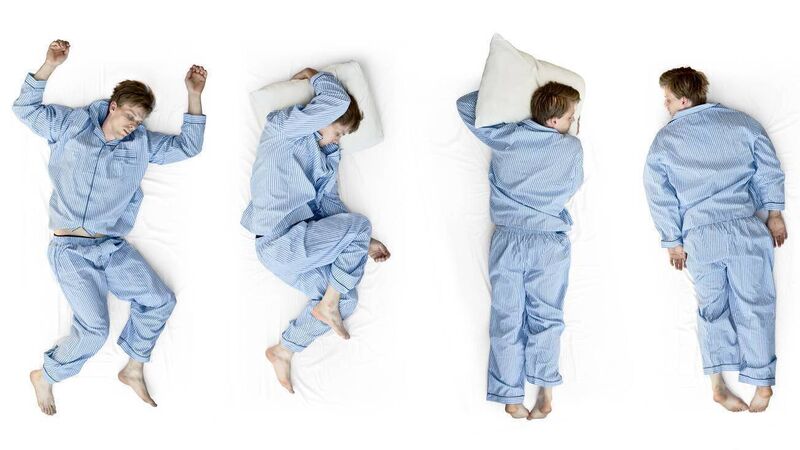We all have our go-to sleeping position but what’s the healthiest position to sleep in?

Sleeping positions seen from top isolated on a white background
We all have our go-to sleeping position — whether curled on our side, stretched out on our back, or face down. But does the way we sleep affect our health?
While most adults know they should sleep for seven to nine hours each night, the position may be just as important as the duration. From easing back pain to reducing snoring, sleep posture may play a bigger role in our wellbeing than we think.
So, does one sleeping position trump the others? We ask the experts.
What sleep positions put more strain on our joints than others?
“Different sleeping positions generate different surface contact, putting pressure on various joints,” says sleep expert Dr Hana Patel. “The three basic sleep positions — supine (lying on your back), side, and prone (lying on your front) — require different types of support when it comes to your mattress.
“Unsupported sleeping positions, like sleeping on your stomach, can place stress on the spine and lead to back pain.”
Should people with back pain avoid any position?
“If you have back pain, you should try to avoid lying face down to avoid increased pressure on your spine and neck,” says Patel. “Instead, try sleeping in one of two positions: The first is on your side with the knees drawn up, and the second is on your back with a small pillow underneath the back of the knees to maintain the natural curve of the lower back.”
Sleep is hugely important for recovery, regeneration, and injury prevention, but for those living with back pain it can feel impossible to get the optimum eight hours per night, says osteopath Michael Fatica. “To make matters worse, back pain and sleep are interconnected, with some research showing that insufficient sleep can exacerbate problems, so it can feel like an unwinnable battle.”
Are any positions better for breathing?
“If you have breathing issues, like sleep apnoea, then your symptoms may be worse when lying on your back, because gravity can cause the tongue and soft palate to fall back and narrow the airway,” says Patel. “Try sleeping on your side to combat this.”
Is there a best position or is it individual?
“There is no perfect position for good quality sleep that I would recommend, as it often differs from person to person,” says Patel.
“It’s recommended not to sleep on your front, as you are more likely to move out of the midline position and strain your neck. Several studies show that sleeping on the right side is associated with improved sleep quality, like fewer awakenings in the middle of the night. Another study has found that sleeping on your left side is associated with less acidity and reflux symptoms.”
There are instances, such as during pregnancy, where the HSE recommends a particular sleeping position. “For example, the safest position to go to sleep while pregnant is on your side, either left or right,” says Patel, “This helps to improve the flow of blood and oxygen to the baby, and is safer for both it and the mother.”
What factors are more important for sleep quality than position?
What you do in the evening before you go to bed can improve the quality of your sleep, especially if you have back pain.
“If you’re sedentary, move more in the crucial ‘two-hour’ window before bedtime,” advises Fatica.
“Go for a walk, make a drink, perform some light stretches, such as some simple hip flexor and hamstring stretches.”
Stress can also significantly impact sleeping patterns, adds Fatica.
“Establishing a relaxing bedtime routine will help your mind and body wind down,” he says. “This could include reading a book, listening to calming music, or practising meditation or deep breathing exercises.”
In addition, invest in a good mattress.
“There aren’t bad mattresses, just old mattresses,” says Fatica. “It’s also impossible to say whether a hard mattress is better than soft.
“Ultimately, it’s what best allows you to sleep with your spine in a neutral position — everybody is different.”
And if you are struggling to sleep, grab an extra pillow.
“For optimal spine alignment and to help alleviate pain, simply placing a pillow between the knees can significantly help when sleeping on the side — it can also be used to make sure your neck is aligned properly,” says Fatica.
CONNECT WITH US TODAY
Be the first to know the latest news and updates

Celebrating 25 years of health and wellbeing










